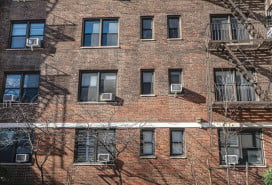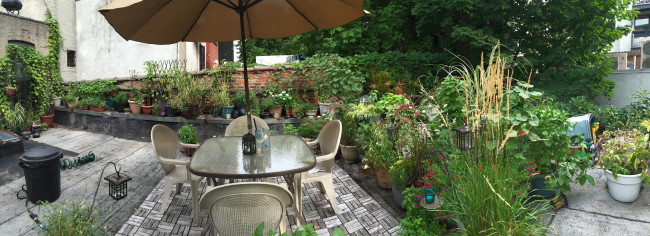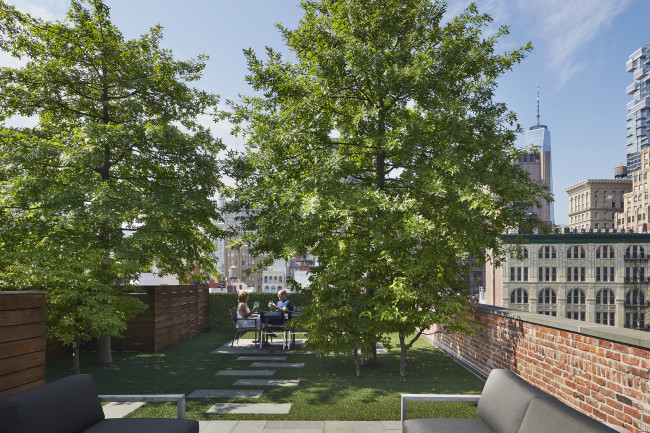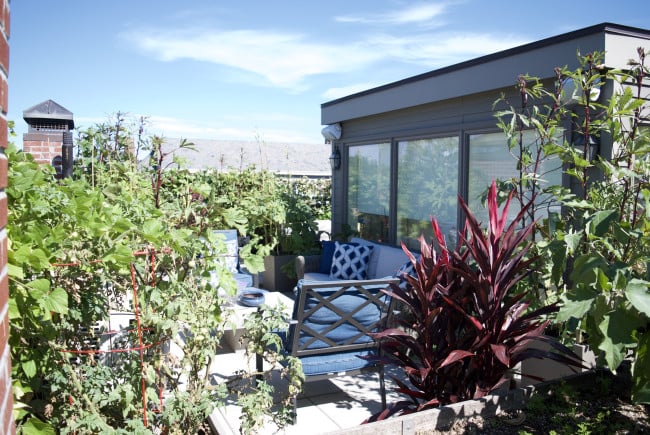- Green roofs cool the air, absorb rainwater, and provide crucial feeding grounds for migratory birds
- You can spot monarch butterflies, birds such as the blackpoll warbler, native prairie grasses, and rarely, the tricolor bat
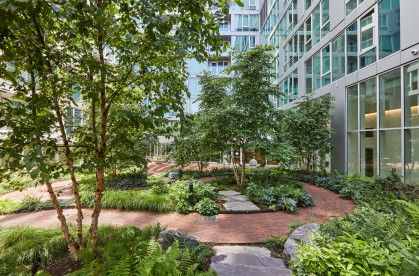
The roof garden on top of the residential tower at 625 West 57th St.
Courtesy The Durst Organization
When you think of New York City’s birds, you probably think of one particular feathered fiend. Sometimes called a “sky rat,” it’s short, often missing toes, and travels in packs. But the pigeon is far from the only bird to traverse the city’s skies.
Gotham’s green roofs—gardens, farms, and planted green spaces—help the city absorb excess rain water during storms and cool the air. They are home to an assorted mix of bats, bees and plants—plus migratory birds that use roofs as rest stops before flying across the continent. The city might look like a concrete labyrinth from the ground, but its skies are teeming with life.
“The story that plays out on a green roof is so fascinating to me. The [roof] was once this useless space devoid of life,” says Dustin Partridge, the director of conservation and science at NYC Audubon. “But then you install these green spaces, and they end up providing this habitat that would otherwise not be there.”
NYC Audubon monitors a handful of green roofs on commercial buildings—including the Javits Center—as part of the Green Roof Researchers Alliance, a consortium of more than 60 researchers including The New School, Columbia University, and The Durst Organization, a developer. But green roofs have become a popular installation for residential buildings too.
“[Green roofs] offer such a Swiss army knife of benefits,” says Anastasia Plakias, co-founder and chief impact officer of rooftop farming business Brooklyn Grange. “It's an investment that improves quality of life for neighborhood residents, migratory and native wildlife has pollinators, and improves quality of life for residents in the building tremendously as well.”
If your building doesn't have a green roof, you might still be able to spot a handful of plants and animals around the city. (Or, you can score a tax abatement from the city to install one). Read on for a list of some of the coolest flora and fauna to flock to NYC.
Migratory birds
Partridge’s favorite birds to spot on green roofs are those that have flown from far flung corners of the continent. One is the blackpoll warbler, which migrates from Denali National Park in Alaska all the way to South America in the fall, according to the National Park Service. It can fly for 72 hours straight despite its small stature; it’s only about half an ounce in weight.
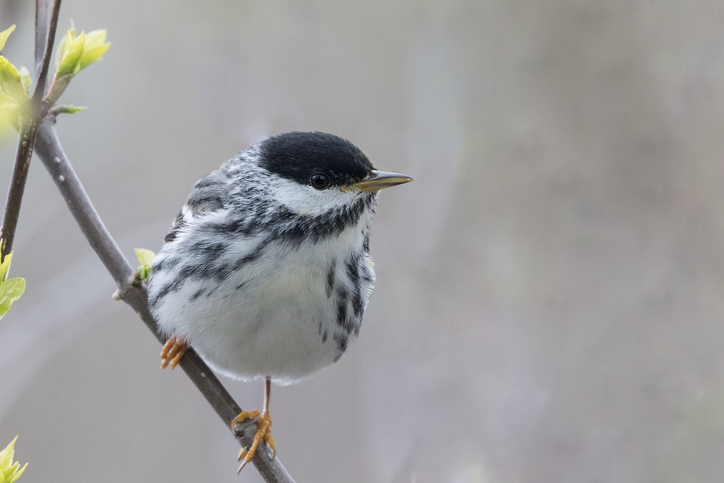
The blackpoll warbler uses NYC’s green roofs as an important pitstop on its journey—fueling up by chowing down on its bugs and flies.
“To think of these birds moving through, finding this tiny roof amongst a sea of concrete, being able to use it for forage space, and successfully using it before they move on to the next stop of their migration is shocking,” Partridge says.
One of the easiest birds to spot is the common yellowthroat, which thrives in NYC’s parks as well as green roofs, Partridge says. Its distinctive colors make it a great “introductory bird” for new birders.
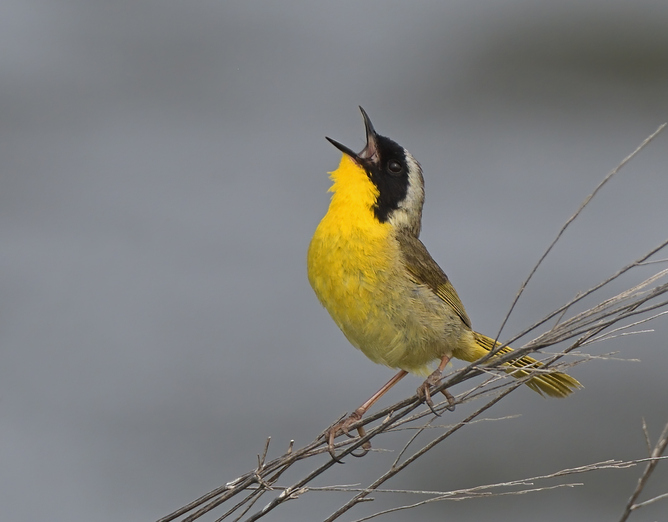
“They’re pretty obvious to identify, especially the males, because they essentially wear this black mask that’s really in strong contrast with the rest of their yellow body,” Partridge says. “It's a great bird for people that are just getting into birding to see and think, ‘oh, that is not something I expect to see in NYC, much less on my roof.’”
Partridge also keeps an eye out for the Eastern Phoebe in the fall, a small green bird that perches on green roofs so it can leap out of the shadows and catch flying insects. It’s petite, but easy to identify by its call.
“Their song is basically them saying their name—Phoebe—and you’ll hear them in the deep forest,” Partridge says. “But you can also see them on green roofs in New York City during migration.”
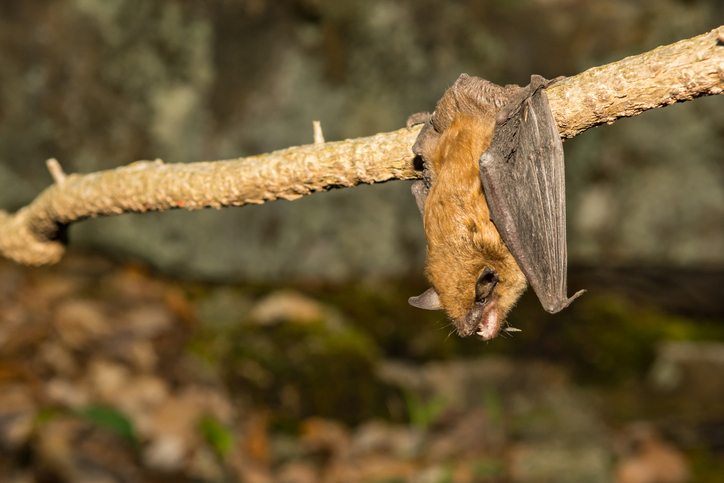
Bats in the belfry
NYC Audubon has recorded five species of bats using green roofs, identifiable by recordings of the ultrasonic sounds they use to navigate the night skies. Bats, much like pigeons, get a bad reputation, Partridge says. But they also help to pollinate plants, disperse seeds, and eat annoying insects, like moths.
Plus, Partridge says they can be pretty cute.
“Often people misconceive them as something to be concerned about but they are these fascinating and often cute little balls of fur that live on the edge of existence,” Partridge says. “They’re out usually if there’s a green roof space that can be foraged way up high. And most of these bats that are moving through are migratory.”
If you’re out at night, you might be able to spot the Eastern red bat, the silver-haired bat, big brown bat, and very rarely, the tricolored bat.
Bees and monarch butterflies
Green roofs have their own kind of butterfly effect, particularly for monarchs.
Monarch butterflies are naturally drawn to green roofs because they lower an area’s temperature, providing a cool respite for the orange and black beauties, Plakias says. Green roofs can be 30 to 40 degrees lower than those of conventional roofs, and can reduce temperatures by up to 5 degrees farenheit city-wide, according to the United States Environmental Protection Agency.
“We’re like a bullseye to butterflies. They flock to us,” Plakias says. “It's not uncommon to see a half a dozen monarchs when you're standing on one of our rooftop sites.”
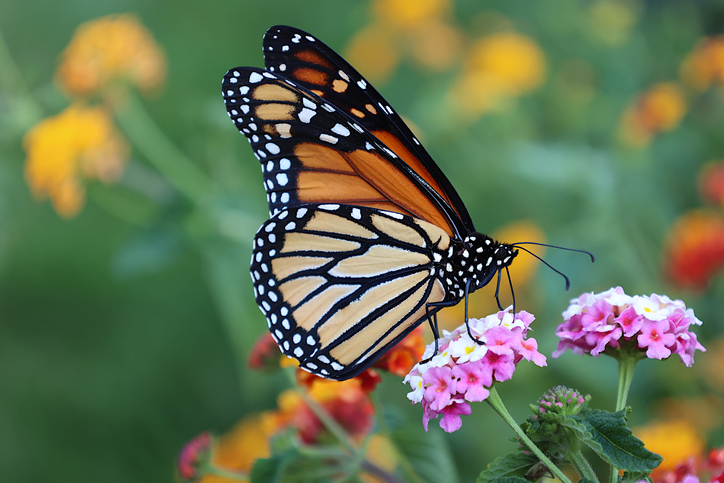
Bees are also popular visitors to the two-story rooftop garden at the Durst Organization’s residential building at 625 West 57th St. The garden runs from the second to fourth floors and includes more than 100 species of plants, says Andrew Sliwa, a senior director at landscape architecture firm John Mini Distinctive Landscapes, which cares for Durst’s rooftop gardens.
While Sliwa can’t be sure, he thinks bees from nearby rooftop hives, like one at Durst’s office tower at One Bryant Park, use the garden to collect nectar and pollen. (You can watch Durst’s bees on their bee camera here.)
Other insects, like arthropods, live a more stationary lifestyle on green roofs. Unable to fly, they spend their entire lives in enclosed spaces, but still represent a crucial food source for birds and bats.
“To soil dwelling arthropods, [green roofs] are kind of like islands,” Partridge says. “They’re there. They’re not going anywhere else. But then a bird can come through, and that bird just came from Central America somewhere and is stopping off on the roof somewhere.”
And of course, the plants
Durst’s 35-story West 57th Street building hosts ferns, oak leaf hydrangeas, river birch trees, and mayapples, Sliwa says. While it’s hard to pick a favorite, Sliwa says he loves spotting hellebores in the dead of winter.
“To see a hellebore when we do get snow popping up out of a small snow cover in the middle of February and blooming, I think that is just really impactful,” Sliwa says. “[Both] for myself as a plant lover, but also urban dwellers that don’t know anything about plants can look out and say, ‘Wow. It's February. It’s 21 degrees out, but there’s a flower in the garden.”
At Gotham Point, an apartment complex at 1-15 57th Ave. in Long Island City, Queens operated by Brooklyn Grange, residents harvest vegetables from a rooftop farm. Resident Crystal Rodrigues has loved harvesting home-grown tomatoes and bitter melons in her eight months living there.
But the vegetation on roofs aren’t just tasty treats, or pretty to look at. They support all the birds and wildlife that flock however many stories up.
Take the monarch for example. They only feed off of certain plants—like milkweed and the aptly-named butterfly weed—making green roofs with these types of flora crucial for their survival, Shauna Moore, the director of horticulture at the Brooklyn Botanic Garden, says.
The Brooklyn Botanic Garden plants butterfly weed—asclepias tuberosa—and other species of prairie grasses in its green roof atop its visitors center. Brooklyn Grange puts milkweed—asclepias incarnata—on its green roofs, along with wild indigo, prairie smoke, and garden sage.
All of those plants serve another purpose—filtering rainwater.
“Below the green roof, we have the rain gardens, and that’s all part of recirculating, filtering, and cleaning the water that comes down in the rain,” Moore says. “It’s just a fantastic model of what somebody might do, who is interested in the environment and biodiversity.”
You might be able to spot the little blue stem, a type of north american prairie grass, atop the Brooklyn Botanic Garden’s visitor’s center. But that roof is also home to several flowering plants that attract pollinators, such as common blazing stars, ironweed, and joe pye weed, Moore says.
So when passing by the garden, or another NYC building, don’t forget to look up. You never know what you might find.
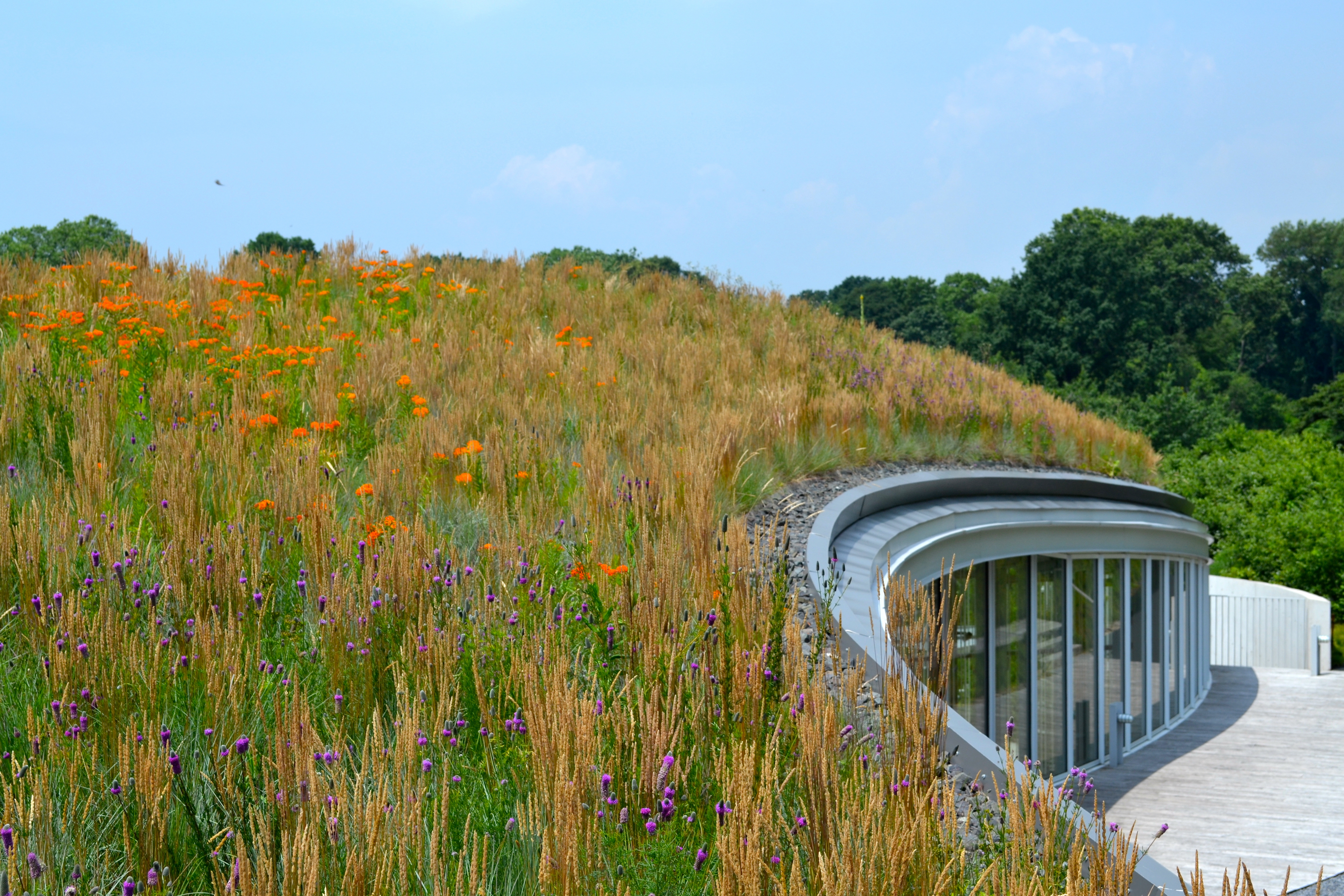
You Might Also Like
Sign Up for our Boards & Buildings Newsletter (Coming Soon!)
Thank you for your interest in our newsletter. You have been successfully added to our mailing list and will receive it when it becomes available.



